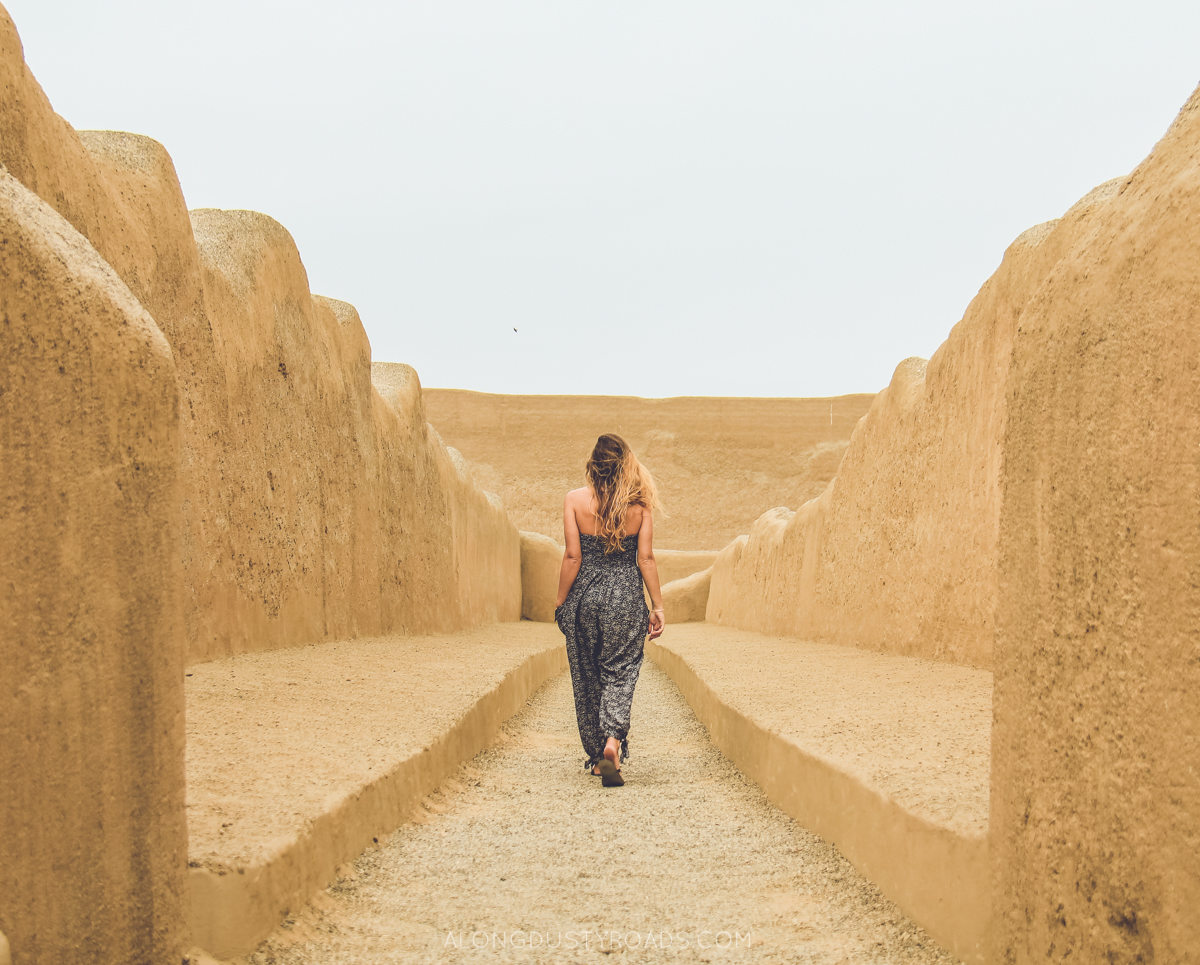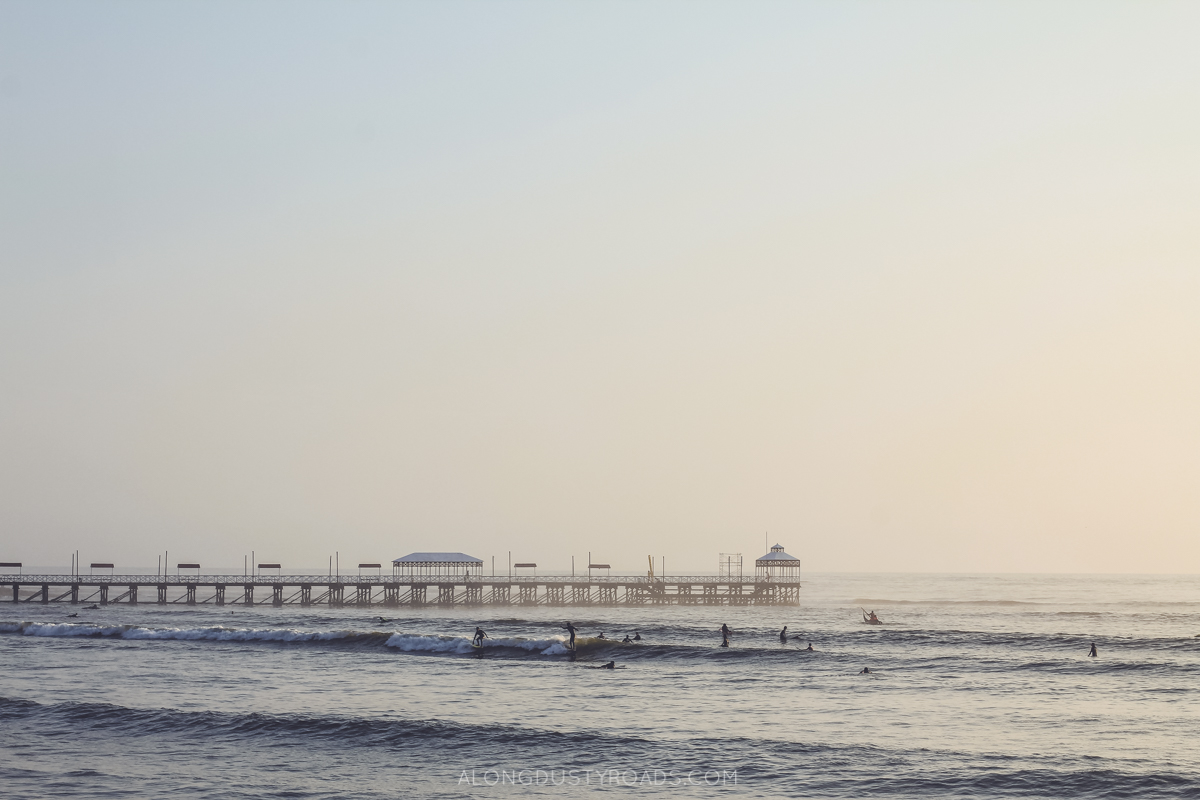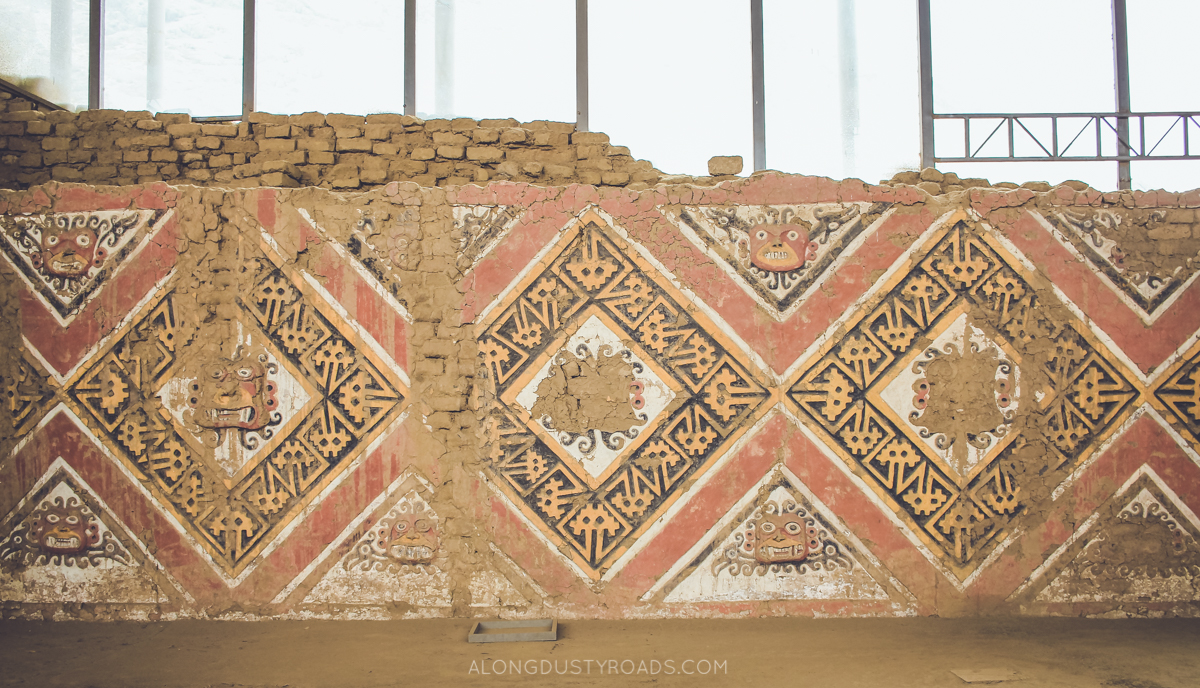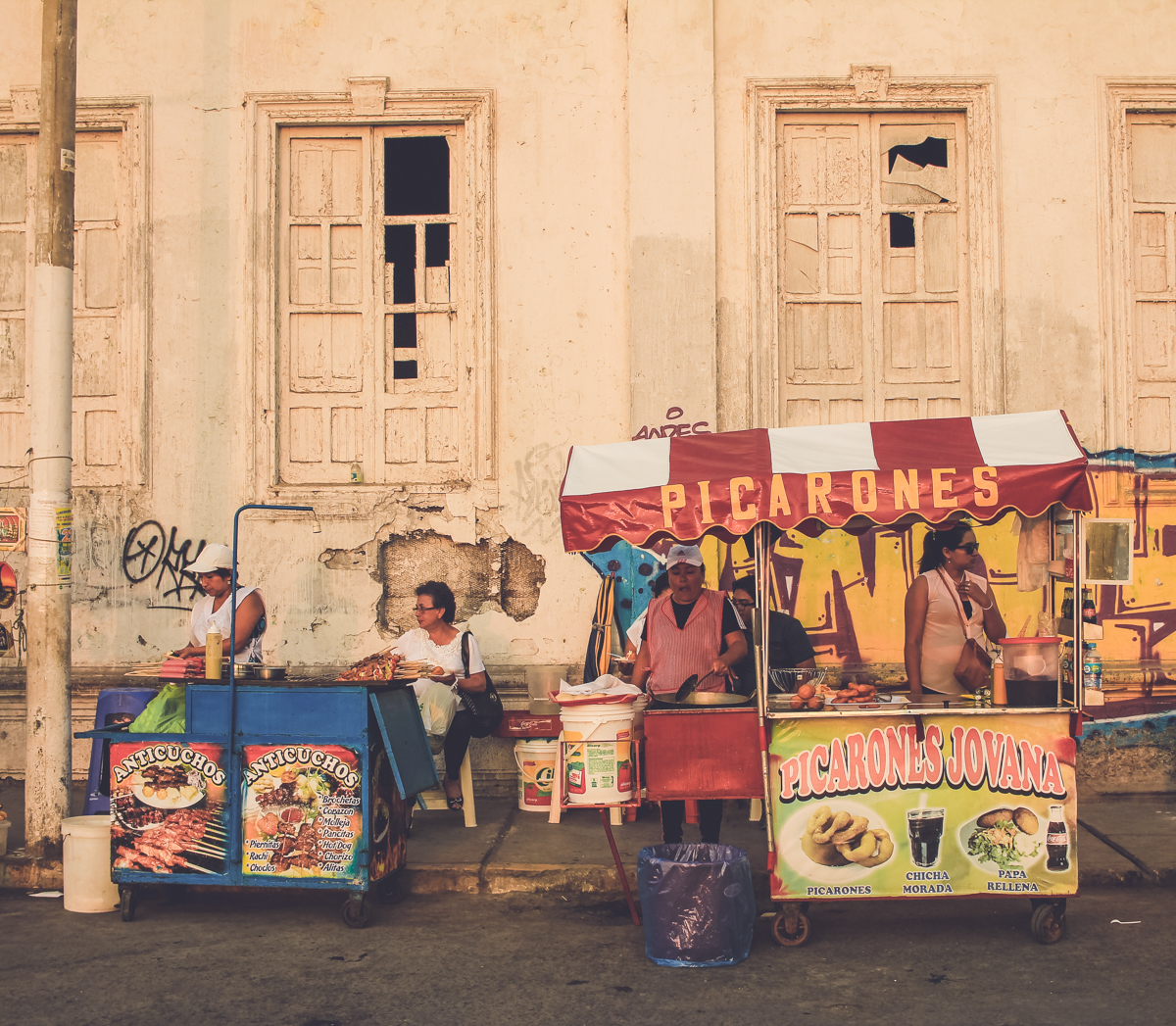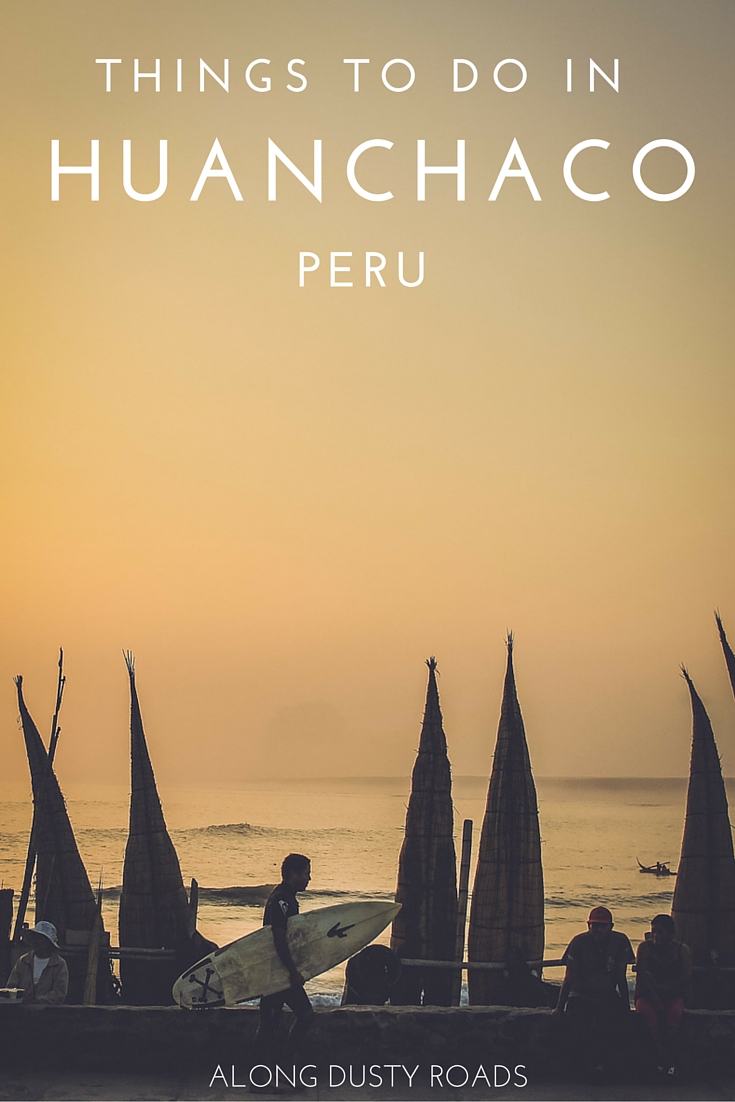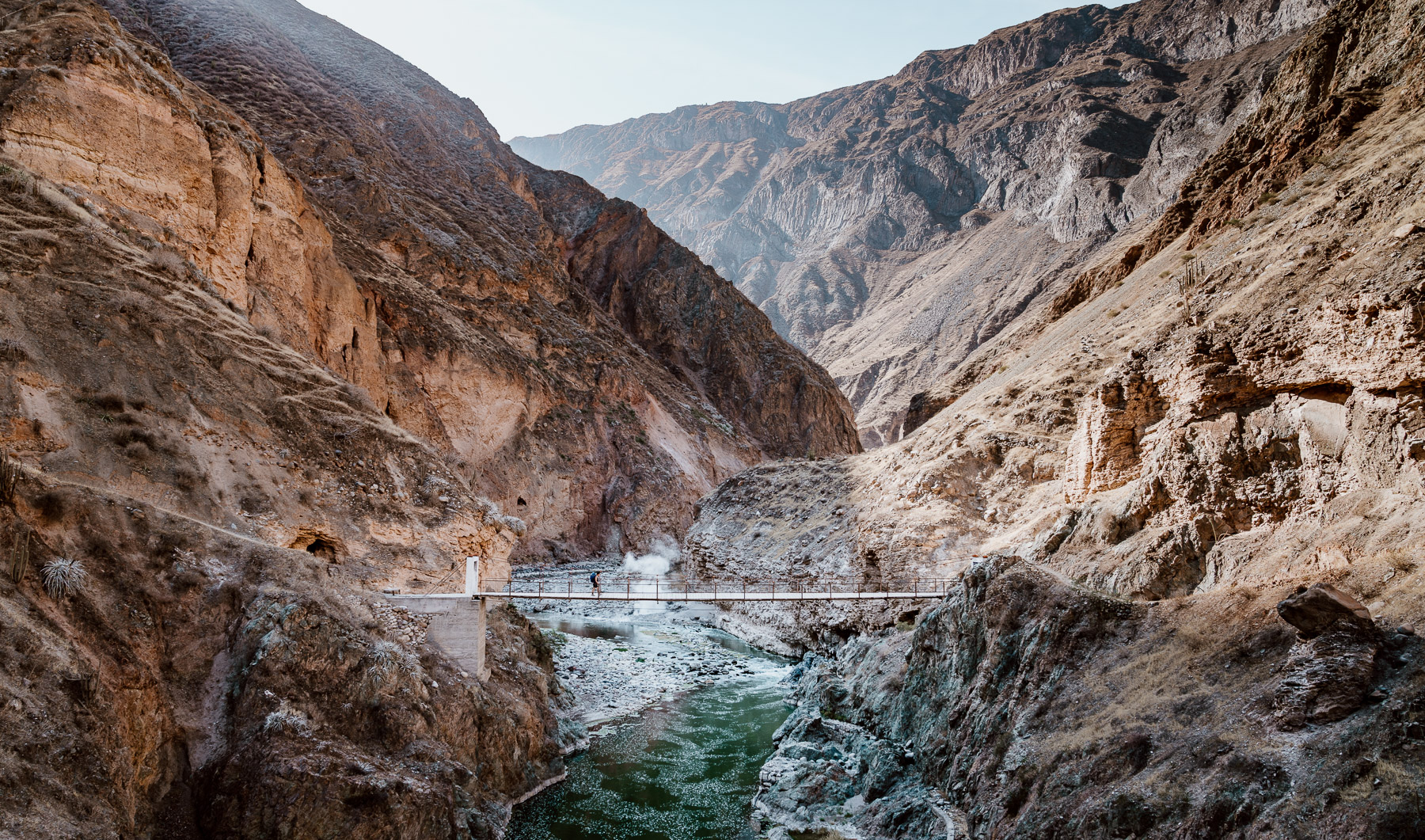If you've made the decision to head this far north in Peru, then we applaud you! Far too often, this part of the country is skipped over by people drawn to the attractions of the south. However, spend some time around town and you will understand who was here before the Incas conquered large swathes of the country. It will also afford you the chance to have fun on the coast.
Hanging out in Huanchacho to explore what the region has to offer is our recommendation. Trujillo, the other option, is only fifteen minutes away but wouldn't you rather stay by the beach rather than in a pretty unremarkable city? Yep, us too.
Here are five things to do in and around Huanchaco during your stay.
#1 ruins at chan chan
As well as being a fantastic song by Cuba's Buena Vista Social Club, did you know that the Chan Chan was actually the largest city in the Americas many centuries ago?
Capital of the Chimu people, it was invaded and abandoned by the Incas in the 15th century. Further pillaging by the Spanish conquistadors mean that, what was once the world's largest adobe city, was left to fade away.
However, with UNESCO recognising it as a World Heritage site in 1986, efforts have been made to improve and preserve the site. Travellers today are able to walk amongst the pathways and rooms of only one of the nine citadels, Tschudi.
It really is a sight to behold. Out here in the arid desert close to the sea, its walls, dorned with friezes of geometric designs or representations of fish and seabirds, give an impression of how impressive this city would have been. In contrast to the rest of the area, this site is well preserved with scaffolding and canvas roofs erected in parts to protect the ruins from the greatest threat; the weather.
Adobe, the earth, sand and water material used to construct the buildings here, does not last well in the rain and wind. And, a combination of El Niño, climate change and lackadaisical funding and efforts at preservation by the Peruvians, means erosion and deterioration are likely.
So, enjoy the fading grandeur of Chan Chan before it crumbles into mud.
how to get there | From Huanchaco, catch any of the collectivos passing by the main road next to the beach. Say 'la entrada para Chan Chan' to the ayudante and it will take about ten minutes for you to reach the entrance. It is also possible for you to start of the the museum, which isn't great, and then walk to the main site itself.
To return, just wait by the side of the road and it won't take long for a collectivo to turn up.
cost | For entry to the main site and the museum, we purchased a ticket a the entrance to the citadel for 10s./$3.3/£2 per person - this also gave us access to two other sites which we didn't visit. There are guides here who you can enlist to show you around the site for a small fee.
Bus travel from Huanchaco cost 1s. per person each-way.
#2 surfing
It wasn't our favourite spot for surfing in South America. This was largely because you had to wear a wetsuit and there were sharp rocks on the sea bed, rather than the sandy warm beach breaks we had enjoyed in Ecuador.
However, there's no doubt that this part of Peru is crazy for surf and surfers are crazy for it. In the town itself, the main swell is to the right-hand side of the pier, however there are a few more breaks scattered along the beach. During the morning or afternoon, you'll see lots of people taking lessons mixing with more experienced riders.
You can also ride one of the world's longest waves on a day-trip from Huanchaco. About 45 minutes away, Chicama is also suitable for beginners and intermediates. For transport there, a number of hostels and surf schools offer services.
need to know | Several hostels offer cheap surfboard rental, whilst there are plenty surf schools providing a wetsuit and board at an hourly or daily rate.
#3 ruins at huacas del sol y luna
If you make the journey to Huaca de la Luna (Temple of the Moon), your compulsory guide will show you a picture. It will show the spot you're standing in under a pile of sand and gravel only twenty-odd years ago. And, if you look out across the desert, you'll see Luna's imposing pyramidical counterpart - Huaca del Sol - still buried in this manner.
Centuries older than Chan Chan, our visit to these temples reminded us of the art, patience and skill behind every archaeological site we visit.
If you get a good guide, tales of warriors, the daily life of the Moche people, evidence of human sacrifice and odd building practices where a new level would be built every few decades on top of the old one will give you a window to ancient Peru. However, the standout of the site - which in parts looks like a building site due the amount of scaffolding and rusting sheets of metal as roofing - are the mosaics.
Beautifully preserved, due to being under cover for centuries, their colours remain vivid. A real highlight is the grand wall which has hundreds of these colourful carvings and paintings.
The site itself is dependent on private funding and, therefore, has only performed limited excavations.
how to get there | From Huanchaco, catch a collectivo into Trujillo. Ask to be dropped off close to the Plaza de Armas.
From there, take the street called 'Huayna Cuapac' and follow it for 10 minutes to Avenida Los Incas. On this busy road, there are collectivos picking for numerous destinations, including Las Huacas del Sol y Luna. We were confused about which collectivo we needed to hop on, but a friendly local helped us to get on the right one - just be sure to confirm with the ayudante that it goes to 'Las Huacas' before you get on. The cost should be no more than 3 soles each.
It will take around 20 minutes to bring you to the site entrance. To return to Huanchaco, just wait in the car park or entrance and a collectivo will pass by to take you back to Trujillo.
As ever, try to make this trip in the morning or early afternoon so that you're wandering the streets at a safe time.
cost: Entry to the site was 10s./$3.3/£2 per person. A tour guide is included within this price and you are only able to enter the site with them by your side; tips are recommended.
There is also a museum, entry for 5s./$1.8/£1 per person housing pottery and other artefacts from the two sites and explaining some of the history. We chose not to visit this so can't give you our recommendation on whether to go.
Transport to and from the site from Huanchaco cost a little less than 9s./$3/£2 per person.
#4 eating ceviche
Peru is famous for the dish of seafood cooked in lime juice and seasoned with salt, coriander and chilli. As it's, well, raw seafood, it makes sense to eat it at its freshest and safest when you can actually see the sea from your dinner table.
Huanchaco has dozens of restaurants offering ceviche dishes to suit every budget, but it may be difficult for you to choose one that looks good. Our tip? Ask local working at your hostel which is their favourite ceviche restaurant. You may get six different answers, but at least it will give you a short-list to work through and reduce your chances of paying for a dodgy batch.
costs | Prices vary wildly. You could get one of the ceviche lunch deals at a hole-in-the-wall restaurant catering to backpackers for 7-10 soles or pay upwards of 35 soles at a fancier restaurant.
#5 people watching at the pier
The beach in Huanchaco, when we visited, wasn't exactly at its prettiest. However, the main strip of the town, next to the pier is a place abuzz with energy when the sun is out.
Tourist tat stalls, street food vendors, holidaying Peruvian families, Argentinian jewellery maker all set up camp there. Grab a Trujillo beer at the shop, enjoy picas and watch the fisherman and tourists braving the waves in the caballitos de totora, the little reed fishing boats unique to the area. Top it all off with a view of the gorgeous sunset.
what about trujillo?
Seduced by more than a couple of fancy blog posts on the place, we set off one morning to discover the town with Peru's prettiest main plaza (the hostel owner's words, not ours), but my God, were we disappointed. It's not that it's particularly dirty or unsafe, it's just not really that great - just an average mid-size Latino city.
Of course, you don't have to take our word for it, but our recommendation? If you've only got a few days, give it a miss. Huanchaco makes a much nicer base.
Essential information
accommodation
In Huanchaco, we spent our first night in the very basic accommodation of My Friend Hostel (30s./$10/£6 for a double room). This is on a Los Pinos, the street where you'll find a number of basic, budget accommodation and restaurants with popular and cheap backpacker menus. The rest of our stay was in the much nicer Frog's Chillhouse (definitely our top pick for Huanchaco) on the other side of town - read our review or click here to make a reservation.
eating out
We ate a couple of times at the backpacker restaurants on Los Pinos which filled our bellies. Despite the My Friend hostel being pretty rubbish, they actually serve a fantastic value breakfast which we'd recommend. A few doors down, you will find 'Menu Land', which as the name suggests serves and inordinate amount of food options at very reasonable prices (they also have perhaps the world's largest selection of condiments!).
Walking along the beach road, you'll find plenty of fancier options and some cute cafés too. Wander a few blocks in and there are local restaurants serving good, hearty two course lunch deals for 5 soles. And, if you're hungover or absolutely ravenous, the cool 'Surfer Burger' does some of the best burgers we've had since we've left the UK.
hostel cooking
In the town itself, you are limited to a few small corner stores or the small fruit and veg market. If you're staying for more than a few days, we'd recommend you take a collectivo to 'El Mall' in Trujillo (that's the name the bus drivers know it by) where you'll find a large Tottus supermarket.
transport in and out
As mentioned above, there are collectivos running to Trujillo every 5 minutes. Just stand on the side of the road and one will be passing by. You shouldn't pay more than 2 soles per person (price as of November 2018).
For onward travel south, these will drop you off at the bus station in Trujillo or you can hire a taxi from Huanchaco (a taxi should cost no more than 15s during the day, 20s at night). If you're taking a night bus to Huaraz or Lima, then we'd recommend you purchasing your tickets in advance on-line at busportal.pe or from the ticket offices in central Trujillo. If Peru is your next stop, then this our guide to the route you'll need to follow in reverse.

